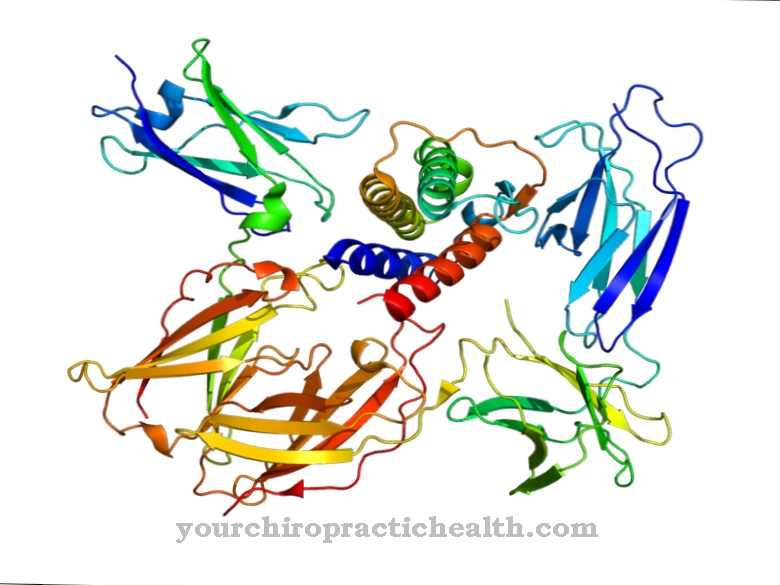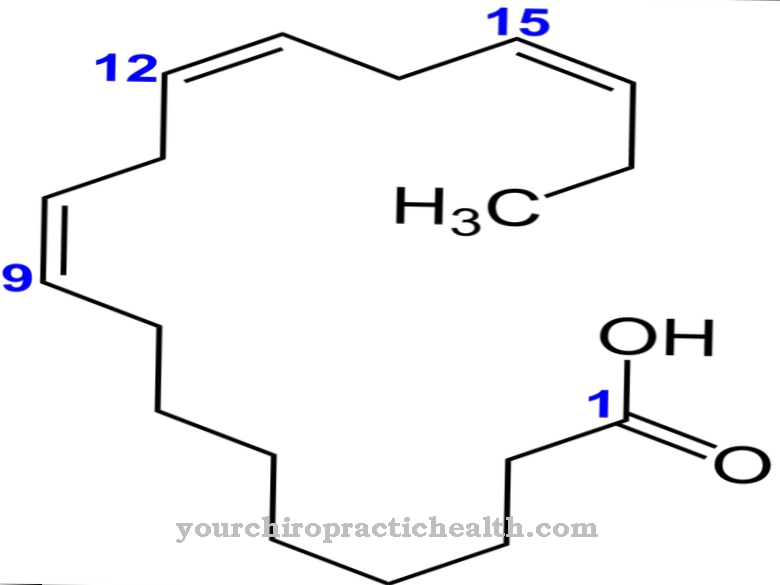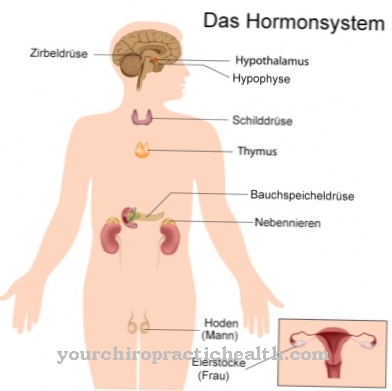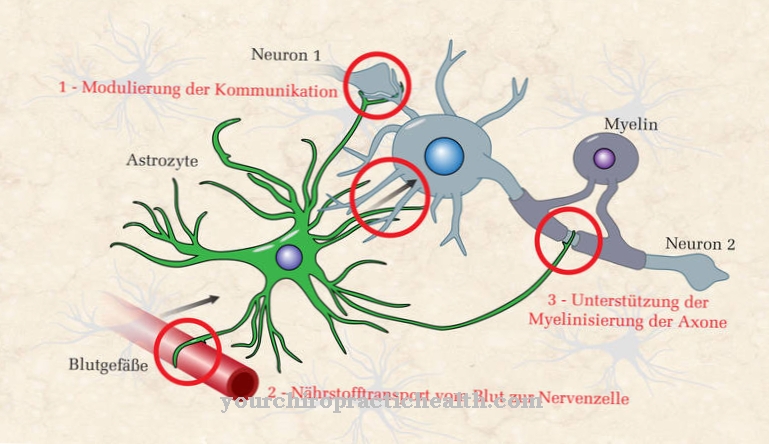Hypoxanthine is a purine deviate and comes in bound form as a nucleobase and in free form, e.g. B. in the urine. It is also found in the glands and bone marrow. As a deamination product of adenine, hypoxanthine is oxidized to uric acid and xanthine. Less often it forms a basic structure of nucleic acids.
What is Hypoxanthine Guanine Phosphoribosyltransferase?
The tetrameric enzyme is formed from hypoxanthine and guanine Hypoxanthine guanine phosphoribosyl transferase.
Tetramers are macromolecules that consist of four similar building blocks, more precisely of monomers. The enzyme is one of the most important in the purine metabolism of eukaryotes, is sensitive to gene changes and can cause deviations in humans through gene mutations, which are expressed in certain metabolic diseases. Such are z. B. Lesch-Nyhan and Kelley-Seegmiller syndromes.
Function, effect & tasks
The enzyme hypoxanthine-guanine-phosphoribosyltransferase increases the purine metabolism and its energetic effectiveness.
This is based on purine bases, which are nucleic acids that are structurally derived from purine. These are xanthine, hypoxanthine, adenine and guanine, which attach to other bases through hydrogen bonds. Such bonds have a major influence on the DNA double helix and replication and play a role in protein biosynthesis.
Purine bases can be recycled by two enzymes. In addition to the hypoxanthine guanine phosphoribosyl transferase, this is the adenine phosphoribosyl transferase. Both form a nucleotide through a phosphoribosyl residue, which in turn is a basic building block of nucleic acids in both DNA and RNA. The molecule consists of sugar, base and phosphate and controls vital regulatory functions in the cells. During the build-up, ATP is saved and uric acid formation is reduced.
If purine bases are recycled, it is referred to as the salvage pathway. This is a general term for metabolic pathways in which a biomolecule synthesis arises from degradation products. The organism carries out its own recycling process, whereby around ninety percent of the purine bases are reused and ten percent are actually excreted. This shows the efficiency of purine base recycling and the importance of hypoxanthine-guanine phosphoribosyl transferase.
Education, occurrence, properties & optimal values
If mutations occur in the HPRT gene, the size and the amino acids can change. This can be the incorporation of additional DNA sequences or nucleotides, which in turn leads to an incorrect production of the gene product that is encoded on the respective gene, or even to the deletion of the entire sequence. Is z. B. changes the amino acid sequence, diseases such as gout arise.
Metabolic diseases such as Lesch-Nyhan syndrome as a result of a genetic defect are particularly serious. This is inherited in an x-linked recessive manner, which means that it mainly affects men who only have one X chromosome. The genetic defect can be present in women, but it only breaks out as a disease when both X chromosomes are affected, which is relatively rare. Most often the second X chromosome compensates for the defect of the first.
You can find your medication here
➔ Medicines for bladder and urinary tract healthDiseases & Disorders
The syndrome manifests itself in a deficiency of the hypoxanthine guanine phosphoribosyl transferase. The enzyme is not produced due to the genetic defect. Due to the mutation and a lack of recycling and conversion of the bases guanine and hypoxanthine, an accumulation of the purine bases occurs, which must be built up and excreted by the body.
The breakdown takes place via the intermediate product xanthine, which is converted into uric acid and excreted via the kidneys. If this process is restricted, uric acid crystals form in the area of the joints, which then trigger more gout attacks. The enzyme is no longer produced, the uric acid level in the tissue and blood rises, and the central nervous system is disturbed.
Lesch-Nyhan syndrome is not directly visible at birth. A noticeable position of the legs and the tendency of the child to move little and develop more slowly can only be seen after about ten months. The syndrome is weak and severe. An increased uric acid secretion and lighter gout attacks are the milder form, with severe symptoms it comes to self-harm, severe mental impairment and aggression. Self-harm occurs through finger or lip bites. When biting into the extremities, it can often be observed that the affected people limit their autoaggression to just one hand. The aggression, in turn, is often directed against people close to you such as siblings or parents.
The most serious form of the disease is characterized by multiple neurological dysfunction and a very pronounced tendency towards self-mutilation. The syndrome manifests itself in spasticity, dystonia, hypotonia, choreoathetosis and an increased willingness to react to reflexes. The mental qualities and development are severely restricted. In this condition, the syndrome can also lead to death to a particularly severe extent.
The disease is diagnosed through a medical picture. The uric acid level in urine and blood is measured and the activity of hypoxanthine-guanine phosphoribosyltransferase in tissue and blood. The latter is greatly reduced and can also be present prenatally.
Treatment of the disease is difficult. The cure is not possible and without treatment the child dies in the first years of life. In some cases, the baby teeth need to be extracted as a preventive measure. Other therapeutic approaches include lowering uric acid levels using drugs such as allopurinol, which acts as an inhibitor in gout. The purine bases are not recycled, but the uric acid is broken down better. The respective disorders, infections and nerve damage are also treated and a special diet is advised, which usually does not contain meat and is low in purine.
Research is also being carried out into the psychosomatic side effects of deep brain stimulation. Medicine hopes that this will prevent aggression and self-mutilation. The Kelley-Seegmiller syndrome, on the other hand, is the mildest form of a deficiency in hypoxanthine-guanine phosphoribosyltransferase. Here, too, too much uric acid is produced and early gout diseases occur. The first indications of the syndrome are orange crystals in the child's diaper, urinary tract infections and urolithiasis. Gout or acute arthritis develop during puberty.
A mental underdevelopment and self-attacks, as they occur with Lesch-Nyhan-Syndrome, are not the case, at most it can lead to attention disorders. Early treatment usually enables those affected to have a normal life expectancy.



























